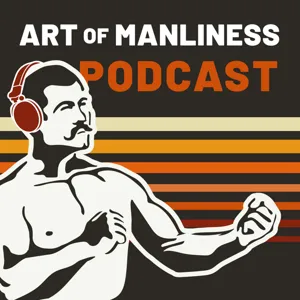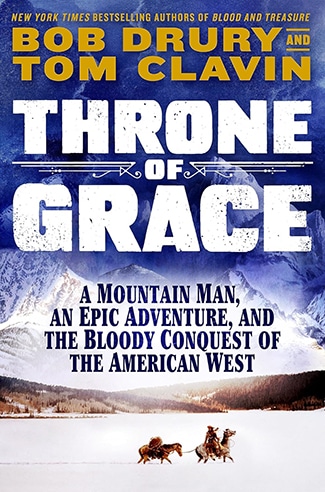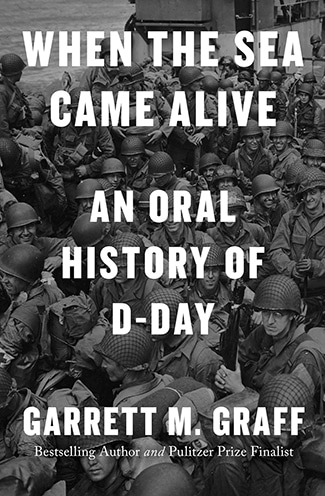Podcast Summary
From quiet kid to great tank gunner: The untold story of Clarence Smoyer: Discover the importance of commitment, teamwork, and love for fellow soldiers through the inspiring tale of a World War II tank gunner.
Makos, who has become one of the premier World War II historians at a young age, shares how his passion for these stories began in his middle and high school years when he felt out of place discussing the topic with his peers. He credits the recent renaissance in appreciating World War II history to various factors, including movies, video games, and the Art of Manliness community. Makos's third book, "Spearhead," follows the story of Clarence Smoyer, a quiet kid from Pennsylvania coal country who became one of the greatest tank gunners of World War II history. The book highlights the importance of commitment, teamwork, and love for one's fellow soldiers, lessons that Makos believes are relevant for members of the social media age. Makos's dedication to keeping these stories alive is a testament to the enduring value of history and the importance of honoring those who came before us.
A young man's fascination with veteran stories leads to a magazine and then epic books: Starting from a fascination with veterans' stories, a young man transforms a magazine into a platform for publishing epic books, learning from mistakes and failure along the way.
The appreciation for military heroes passed down from his grandfathers led a young man to start a magazine dedicated to veteran stories, which eventually evolved into writing and publishing epic books. Growing up, he was captivated by their war stories and shared their admiration for heroes like John Basilone and Joe Foss. With his first computer and publishing software, he and his friends started their little publication, interviewing local veterans. Their work was met with open doors from veterans at all levels, from Dick Winters to the local mailman who flew B-24s. The magazine work served as his training ground for writing, learning through mistakes and failure, which eventually led to his first book, "A Higher Call," at the age of 32, that put him on the map. The story of the American bomber and the German fighter's decision to spare it, carried by the strength of the tale, catapulted his writing career.
Uncovering human stories of change and growth in war: Bestselling author Roger finds success by sharing deeply moving stories of individuals who changed and inspired others during war, often discovered through unexpected sources.
Bestselling author Roger realizes that the most compelling war stories are those that showcase humanity and personal growth, rather than just focusing on body counts and battle records. He looks for stories of individuals who changed and inspired others, often discovering these hidden heroes through unexpected sources. The success of his books, such as "A Higher Call" and "Spearhead," comes from these deeply moving and inspiring stories that resonate with readers. While some stories find him, others require active pursuit, but he believes there is a greater purpose at work in guiding him to the right stories.
The Unsung Hero of Tank Warfare: The Third Armor Division Spearhead: The third armor division, spearhead, played a crucial role in World War II with deep drives behind enemy lines, but the primary tank, the Sherman, became outmatched, highlighting the complexities of military strategy during wartime.
Tank warfare played a crucial role in World War II, particularly for the Americans, with the unsung hero being the third armor division, spearhead. This division, which lost more tanks and men than other divisions, was known for their deep drives behind enemy lines, causing mayhem and confusion. The primary tank used by the Americans was the Sherman, which was effective in 1942 but became outmatched by German tanks like the Panther and Tiger as the war progressed. Despite the strategic importance of upgrading tanks, the Americans were reluctant due to logistical challenges of shipping tanks from the US and the success of the Sherman in deep drives. This is a fascinating reminder of the complexities and nuances of military strategy during wartime.
Sherman tank crew's camaraderie and dedication: In the face of German superior tanks, Sherman crew's strong bond and determination to protect each other made them a formidable force.
Despite the limitations of the Sherman tank during World War II, its crew members, like Clarence, were highly effective due to their strong camaraderie and dedication to keeping each other alive. The Germans had superior tanks with more advanced armor and firepower, but the Sherman crew's morale and teamwork were crucial factors in combat. The Sherman's armor and weaponry were outdated compared to the Germans', leading to high casualty rates when they faced the Panther and Tiger tanks. Soldiers even had to improvise by adding their own armor to the Sherman tanks. However, the Sherman's crew members' close bond and determination to protect one another made them a formidable force.
Ordinary soldiers' courage and resourcefulness: Soldiers overcame challenges with outdated equipment, discovered hidden talents, and demonstrated resilience and determination in extraordinary circumstances.
The courage and resourcefulness of individual soldiers played a significant role in the success of the Allied forces during World War II. Despite facing challenges with outdated equipment, they found innovative ways to improve their tanks' armor and protection. The introduction of the Pershing tank brought excitement and hope, but also meant taking on the responsibility of leading attacks. Clarence Moyer, a drafted corporal, discovered his hidden talent as a gunner during training and reluctantly took on this role, demonstrating the importance of making the most of one's abilities and not wanting to let down one's comrades. Overall, the story highlights the resilience and determination of ordinary soldiers in extraordinary circumstances.
The Battle of the Bulge: A Turning Point for Two Soldiers: Two young men, Clarence and Gustaf, from impoverished backgrounds, faced off during the Battle of the Bulge, highlighting the human cost of war and the similarities between enemies.
The Battle of the Bulge was a turning point in the story of Clarence Adams, a young American soldier during World War II. Clarence, who grew up impoverished and had to sell candy bars door-to-door to help support his family, was drafted at 19 and went to battle when he was 21. The Battle of the Bulge was a significant victory for the Allies, but it also marked the beginning of their entry into the Third Reich, which was expected to be even more challenging. Clarence, who had been a successful gunner, was given the Pershing tank to lead his troops into the biggest battle of the war, the city of Cologne. Meanwhile, the German side was represented by Gustaf Shafer, a young tank radio operator from an impoverished family who dreamed of being a locomotive conductor. The similarities between Clarence and Gustaf, both raised in poverty and drafted into the war as teenagers, add depth to the story and highlight the human cost of war. Despite the age difference and opposing sides, their experiences and backgrounds were strikingly similar.
Unexpected connections formed between unlikely heroes during WWII: Despite fighting under opposing flags, Gustav and Clarence found common ground in their duty to protect their families, illustrating the complexities of war and the human desire to connect even in the most dire circumstances.
During the height of World War II, two unlikely heroes, Gustav and Clarence, found common ground in their duty to protect their families, despite fighting under opposing flags. Gustav, a German farmer, treated a Russian POW with respect and compassion, defying the rules to share meals with him. Gustav's reluctance to fight for the Nazis was evident, but his sense of duty to his family and community drove him to the battlefield. Meanwhile, Clarence, an African American tank commander, led his troops fearlessly into battle, accepting his role as the leader of the charge. Both men's stories illustrate the complexities of war and the human desire to protect loved ones, even in the most dire circumstances. Their shared experiences and encounters during the Battle of Cologne highlight the unexpected connections that can form in the midst of conflict.
The grueling and unpredictable Battle for Cologne during WWII: American soldiers faced unconventional threats from German forces, using clever strategies to outmaneuver enemy tanks, but victory was often short-lived due to ambushes and unexpected attacks.
The battle for Cologne during World War II was a challenging and deadly experience for American soldiers. Clarence, a tank gunner, faced numerous threats from German soldiers with unconventional weapons and fortified positions. During a duel between his Pershing tank and a Panther tank commanded by Gustav, Clarence used a clever strategy to knock out the German tank by shooting through a crumbling building. However, the victory was short-lived as an ambush occurred, and two Sherman tanks approaching the cathedral were destroyed. Among the soldiers, Carl Kellner, a brave and experienced tank commander, was poised to claim victory but was unfortunately caught in the ambush. The battle for Cologne was a grueling and unpredictable experience for both sides, with each side suffering significant losses.
A soldier's quick thinking saves the day: A brave soldier's adaptability and quick thinking turned the tide in a battle, saving his crew and contributing to victory despite personal sacrifice.
The selfless actions of a single soldier, Clarence Smoyer, turned the tide during a pivotal moment in the Battle of Hürtgen Forest during World War II. Facing a German Panther tank, Clarence and his crew had a plan to engage the enemy and retreat. However, when the driver saw the muzzle of the enemy tank, he panicked and accelerated, throwing their tank into the intersection. Clarence, with quick reflexes, fired without aiming and hit the Panther in the back. The shock and terror caused the German crew to abandon their tank, but they continued to fight until Clarence fired again, ensuring their defeat. Despite the loss of his leg, Clarence's bravery and quick thinking saved the lives of his crew and contributed to the eventual victory. The story illustrates the importance of courage, adaptability, and teamwork in the face of adversity.
The common experience of war shaped the humility and dedication of soldiers like Clarence: During WWII, the majority of people knew someone fighting, leading soldiers to view their actions as duty and remain humble despite heroic actions. The war's end marked the end of an era of collective sacrifice.
The humility and dedication of World War II veterans, like Clarence, were shaped by the collective experience of a nation at war. Unlike today's military, where a smaller percentage of the population serves, during World War II, the majority of people knew someone who was fighting. This common experience led soldiers to view their actions as simply doing their duty. Clarence, the best gunner of World War II, was no exception. Despite his heroic actions, he remained humble and focused on his job. The war's end came with the capture of the Ruhr Valley, Germany's industrial heart, and Clarence's unit, Spearhead, made a remarkable 100-mile drive behind enemy lines to help secure this vital region. This mission marked the end of the war and the end of an era of collective sacrifice.
The Battle of Patterborne: Clarence's final showdown: Clarence's military career culminated in a hard-fought battle against German armor schools in Patterborne, ending with a personal connection to a German soldier post-war.
The battle of Patterborne was a pivotal moment in Clarence's military career. This small town, home to German armor schools, was where the German troops and their tanks concentrated. The final showdown between the Allied forces and the German armor cadre resulted in a hard-fought battle for Clarence, marking the end of his military service. After the war, Clarence returned home and tried to put the past behind him, but he later reconnected with Gustav, a German soldier he had encountered in Cologne, creating an unexpected connection between their wartime experiences.
Former enemies find friendship and connection: Former enemies Clarence and Gustav defied time and circumstance to form a deep friendship, finding healing and peace through their shared experiences and sense of humor.
The power of reconciliation and connection can overcome the deepest-rooted conflicts and traumas. Clarence and Gustav, former enemies during World War II, defied the odds of time and circumstance to meet and form a friendship. Their shared experiences and sense of humor allowed them to bond, and their exchange of stories and memories proved to be therapeutic for Clarence, who had kept his war experiences bottled up for decades. Through their unlikely friendship, they were able to reframe their past and find peace. Even today, they continue to connect through technology, proving that it's never too late to bridge the gaps of the past. During the book tour for their story, Clarence, now 95 years old, joined forces with Adam to share their remarkable journey with the world.
A tale of sacrifice and generosity: Unselfish actions of heroes challenge societal norms, inspiring us to remember and honor their sacrifices
The story serves as a reminder of the ultimate sacrifice and generosity shown by a generation of warriors, and challenges the current societal norms of self-centeredness. Clarence's actions, which include leading his troops into battle knowing the danger, and receiving a long-overdue homecoming surprise, demonstrate the power of unselfishness and the importance of not forgetting the sacrifices made by our heroes. The experience of working on the book and getting to know Clarence has changed the writer's perspective on life and made him more mindful of the impact of his actions. The story is a testament to the enduring values of courage, love, and generosity, and serves as an inspiration to remember and honor the past.
Remembering the Heroes and Their Sacrifices: Explore the stories of heroic men and their sacrifices through The Art of Manliness podcast and resources at aom.is/spearhead, and put what you've learned into action.
The team behind The Art of Manliness, including Adam Makos, are dedicated to keeping the stories of heroic men alive. Makos, the author of Spearhead, emphasized the importance of remembering these men and their sacrifices. Listeners can continue to explore this topic by checking out the resources in the show notes at aom.is/spearhead. With over 490 podcast episodes and thousands of articles on various topics, ArtofManliness.com is a valuable resource for personal growth. To support the show, listeners are encouraged to leave a review on iTunes or Stitcher, and to share it with others. As always, the goal is not just to listen, but to put what you've heard into action.













